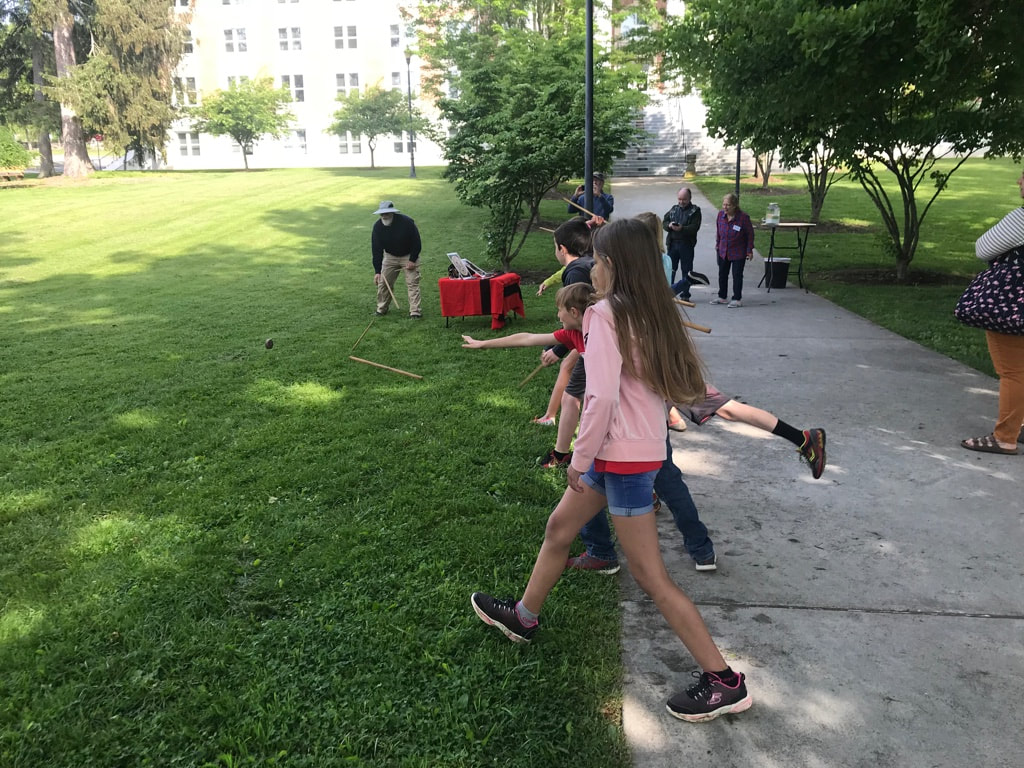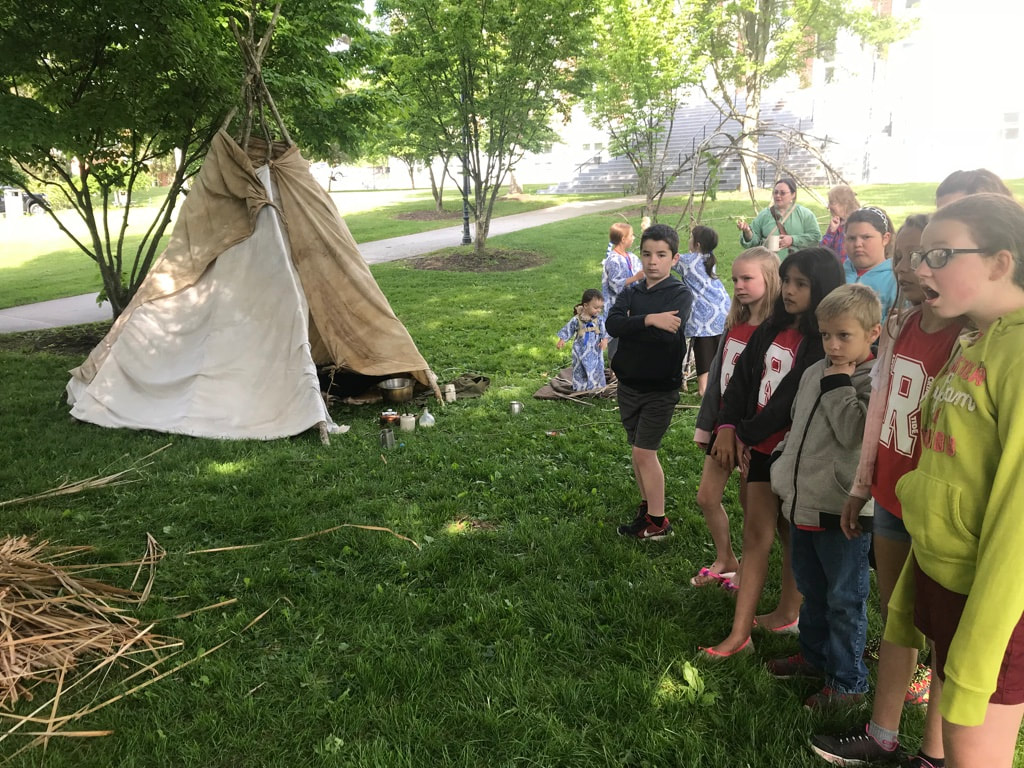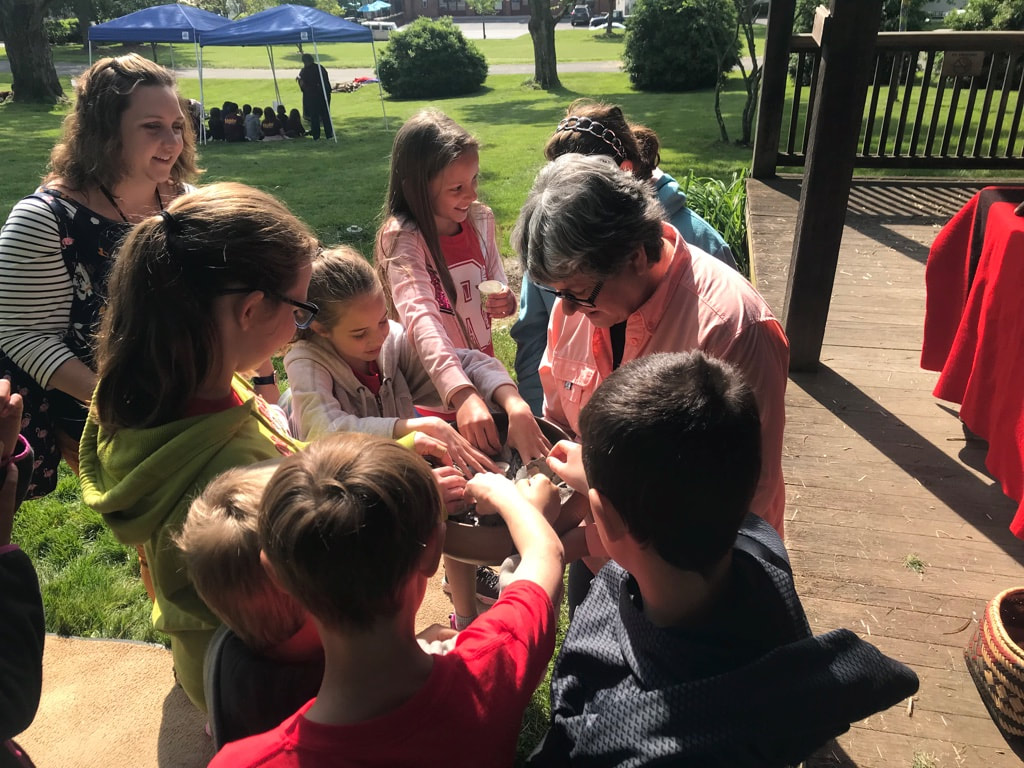As settlers on this land we must acknowledge that the land we consider home, the Greenbrier Valley, once belonged to Native American tribes and Peoples. We honor the land and its Indigenous Peoples through our educational programming and displays in the North House Museum and Archive.
At the Greenbrier Historical Society (GHS) our mission is to share and preserve the diverse history and culture of the Greenbrier Valley. We have made it a May tradition for GHS to host fourth-grade classes on the North House grounds for an exploration of Native American craft and culture. This year fourth-grade classrooms will receive materials for a number of different classroom activities including supplies to make a dream catcher and a pinch pot, a Chunkey game set, and reading materials. Informational videos and resources about Native Americans will accompany the kits. The chosen resource videos explain how to talk about Native Americans in an appropriate and respectful way, dispel misconceptions about Natives, and examine various questions posed by non-Native people.
A Note from Program Leader - Toni Ogden

Thank you for sharing our Native American Heritage Day educational program with your students. In addition to the instructions, videos, and resources on our website, I am available at your convenience to go over any parts of the classroom activities provided. We can schedule a Zoom call or Google chat virtually, or you are always welcome to schedule a visit to the North House Museum.
We would love for you to share your students' pinch pot and Dream Catcher creations with us on our Facebook and Instagram pages using the #GHSNAHD!
We would love for you to share your students' pinch pot and Dream Catcher creations with us on our Facebook and Instagram pages using the #GHSNAHD!
Classroom Activities
Create Your Own Dream CatcherThe first Dream Catchers can be traced back to the Indigenous Ojibwe people. Dreams have always been a fundamental part of the Ojibwe culture and they believed dreams could serve many purposes. With such an insightful understanding on the importance of dreams, the Ojibwe people created the Dream Catcher to assist a person's ability to receive good dreams and filter out dark or negative dreams with the use of a dream catcher. Dream Catchers became largely accepted in the United States in the 1970s.
|
Create Your Own Pinch PotIndigenous tribes have made pottery for thousands of years. The pinch pot can be traced back to the Cherokee people of the South-Eastern United States. Pinch pots were created to hold seeds and grains, water, and other natural resources usually to aid in farming. As tribes died off or were moved from their ancestral land, Indigenous pottery making has also died off. Some tribes found a commercial market for their ceramic pieces, thereby ensuring the continuation of their craft to this day.
| ||||||||||||
Play The Chunkey Game |
Plant Your Own Seeds - The Three Sisters |
|
The Chunkey game was traditionally played by rolling disc-shaped stones across the ground and throwing spears at them in an attempt to train young Indigenous hunters. The game was usually played by two men. One would roll the stone and simultaneously both would throw their spears. The spear closest to the stone gained the most points. Games could be played for hours while spectators from the tribe would watch the activity.
|
By the time European settlers arrived in America in the early 1600s, the Iroquois had been growing the “three sisters” for over three centuries. The vegetable trio, Corn, Beans, and Squash, sustained the Native Americans both physically and spiritually. In legend, the plants were a gift from the gods, always to be grown together, eaten together, and celebrated together. Each of the sisters contributes something to the planting. Together, the sisters provide a balanced diet from a single planting.
|
|
| ||||||||||||
Activity Resources
Create Your Own Dream Catcher |
Working with Air-Dry Clay |
|
|
*From the Shawnee Tribe Cultural Center | ||||||||||||||||||||||||||
Chunkey Game |
Planting & Food
| ||||||||
Other Resources
Enjoy this compilation video of dance performances from past Native American Heritage Days at the Greenbrier Historical Society:A Special Thank You to the Trail of Tears Dance Troupe from White Sulphur Springs.
|
|
From Various Native Americans
Indigenous People Answer Commonly Googled Questions About Native Americans |
6 Common Misconceptions about Native Americans
|
Daunette on What Being Native American Means to Her |
Native American Girls Describe the Real History Behind Thanksgiving |
A Conversation w Native Americans About Race |
From GHS
Introduction/Inventory List
|
| ||||||||||||||||||||
How the Deer Got His Horns
|
Brother Crow and Brother Buffalo
| ||||||||||||
Educator Resources |
Recognized Tribes Historically
|
The Greenbrier Historical Society offers links to a variety of sites maintained by third parties. In accessing these sites, you are leaving the Greenbrier Historical Society's website. These links are offered only for use at your own discretion.










